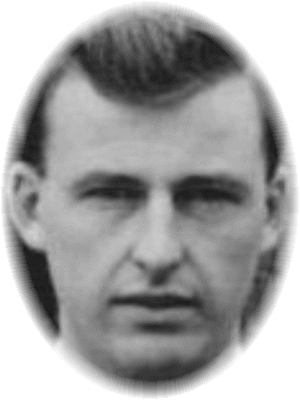MISSING PERSON LINK®
CRANIAL-FACIAL RECOGNITION - UNIDENTIFIED FOUND PERSONS AND MISSING PERSONS
CRANIAL-FACIAL RECOGNITION is a new use of technology that is designed to digitally compare a photograph of a human face with a photograph of a human skull.The photograph of the face would be a front on photograph (e.g. Passport or Driver's License) of a MISSING PERSON.
The photograph of the skull can be a front on photograph, or a 2D image of a skull derived from a post mortem dental CT scan (where remains are not skeletonized).
BACKGROUND
FACIAL RECOGNITION technology is an accepted and reliable way to compare (and match) human faces from still multiple images(pictures).
Some US State DMV successfully use facial recognition technology as a non-invasive method of confirming your identity, and to prevent identity theft and the creation of duplicate licence.
The FBI successfully uses facial recognition data from State DMV photographs to compare with their own database of fugitives.
The facial features or 'LANDMARKS' used in FACIAL RECOGNITION are direct expressions of the underlying bony structure (the skull).
It is not uncommon for facial recognition software to identify and use up to 40 such 'LANDMARKS' from the face.
However, the skull has no eyes, nose, ears and sometimes no jaw (mandible) , so its reasonable and correct to assume that fewer 'LANDMARKS' can be identified from the skull.
Drawn or sculpted facial reconstruction from unidentified skeletal remains (skulls) is to date the 'best technology available' and one of the very few methods that attempt to identify the owner of the skull.
The likeness is built up or drawn from a model of the subject skull (or the real skull).
The artist painstakingly and faithfully creates the finished article by interpreting and applying recognized and well known 'approximations' of tissue depth, musculature , coloration of skin, hair color and type, location and shape of eyes, ears, nose etc. in an effort to 'approximate' the likeness of the how the owner of the skull looked like when alive.
Photographs (images) of the models or sketches are then circulated through most medial channels to try to evoke a recollection of family members or friends of the deceased.
COMPUTER-GRAPHIC FACIAL RECONSTRUCTION is a related discipline which also attempts to 'approximate' the likeness of the owner of the skull, although it uses a much broader information set.
Experts in this field of FACIAL RECONSTRUCTION warn against claiming that the image is a good likeness of the deceased in life, but rather have viewers concentrate on the proportions of the art to spark their possible recall.
CRANIAL-FACIAL RECOGNITION works in a different way.
A 'photographic likeness' is not created.
Images of the skull are sent by the Medical Examiner/Coroner/Pathologist to MISSING PERSON LINK where they are processed by our technicians using our unique CRANIAL-FACIAL RECOGNITION program and entered into the database ready for comparison with MISSING PERSON photographs.
MISSING PERSON LINK maintains a database containing records of UNIDENTIFIED REMAINS and a database containing records of MISSING PERSONS.
UNIDENTIFIED REMAINS database records contain skull data(if available) and DENTAL CHART SEQUENCES (if available). These records are completed on-line by the Medical Examiner/Coroner.
MISSING PERSON database records contain FACIAL RECOGNITION data (derived from a photograph of the missing person) and DENTAL CHART SEQUENCES provided by Law Enforcement Investigators or Loved Ones of the MISSING PERSONS.
DNA Vs. CRANIAL-FACIAL RECOGNITION/DENTAL CHART SEQUENCING.
Currently, mitochondrial DNA is the state of the art when attempting to match UNIDENTIFIED REMAINS with MISSING PERSONS.
By collecting voluntary samples of DNA from relatives of a missing person and comparing them with samples collected from UNIDENTIFIED REMAINS, positive matches are attainable.
The drawbacks are:
- Cost. Collection and processing of a single DNA sample can cost about $2,000 U.S.
The President of the United States in his 'DNA Initiative' authorized the spending of 5 billion dollars over 5 years, which includes the addition of voluntary samples of DNA from relatives of MISSING PERSONS to FBI databases.
Advancing Justice Through DNA Technology
The system is only available in the USA. - Privacy and Other Concerns.
The Government of Canada has recognized the privacy issues with voluntary collection of DNA samples and storing them in a database, but is attempting to pass legislation to amend the DNA Identification Act.
The inventor of DNA, Sir Alec Jeffreys, also has grave privacy and ethical concerns regarding DNA databases and their use.
- Photographs of Remains (skeletonized).
- Post-Mortem Dental Charts.
When a potential link is made through the MISSING PERSON LINK, the data is reviewed by our staff, and the Medical Examiner/Coroner/Pathologist who entered the record will be notified of the potential match.
Any follow up on the investigation is at their discretion.
MISSING PERSON LINK is owned and operated by 911ABC, Toronto, Canada.
